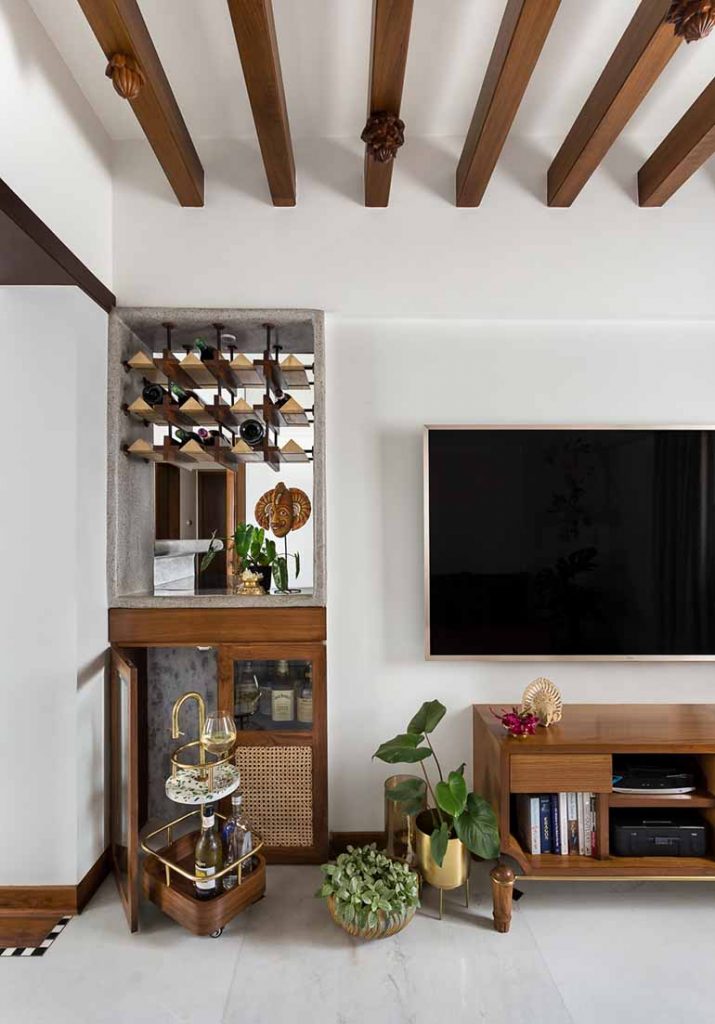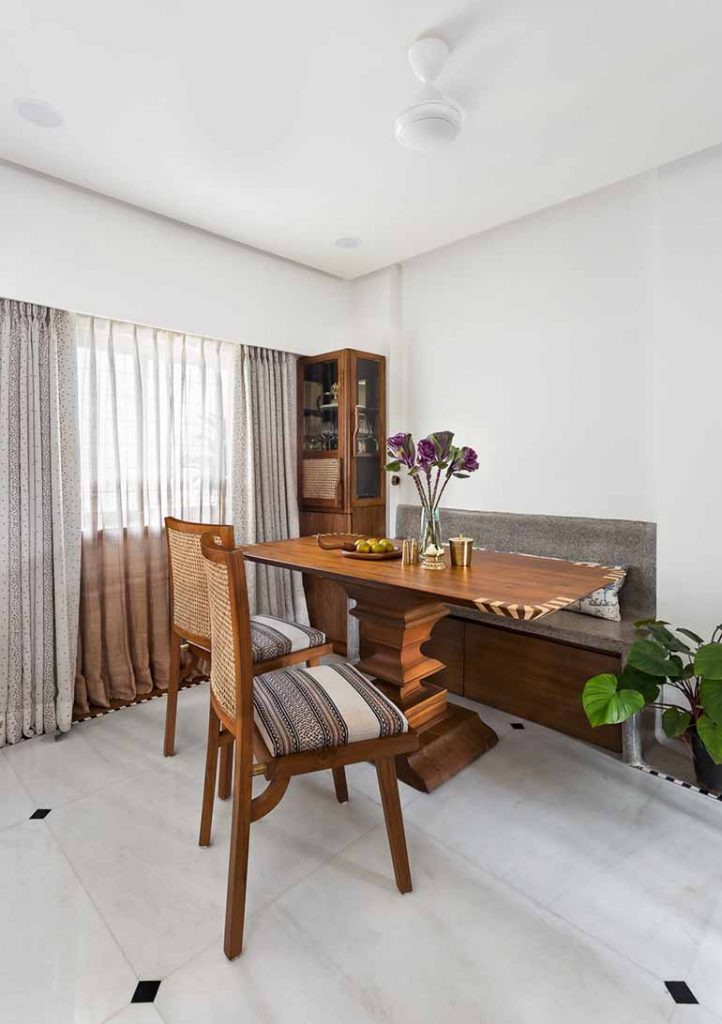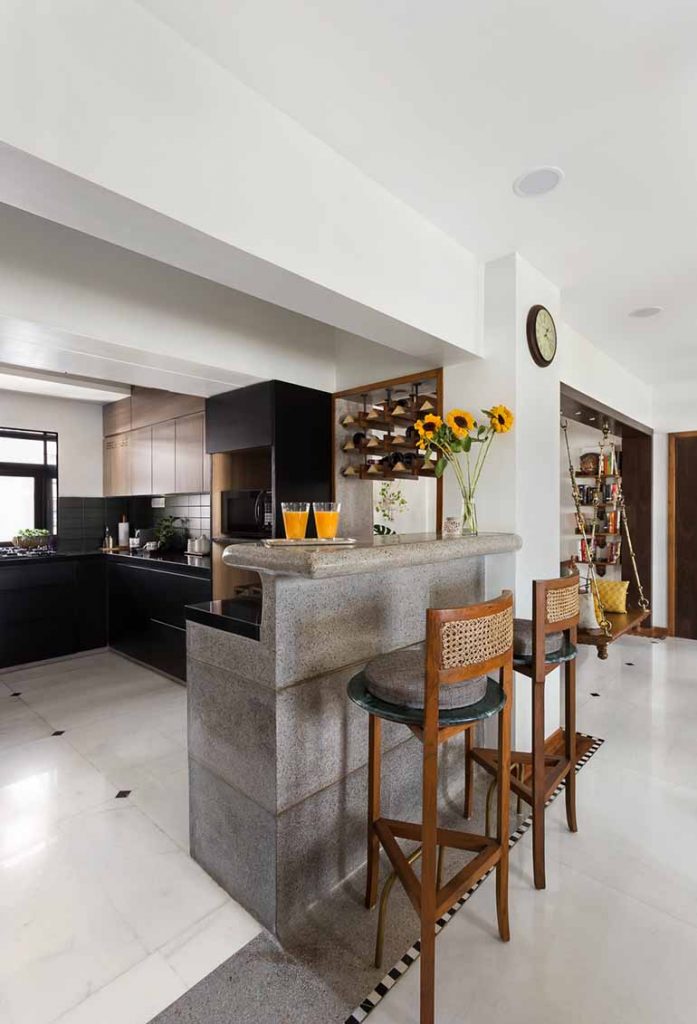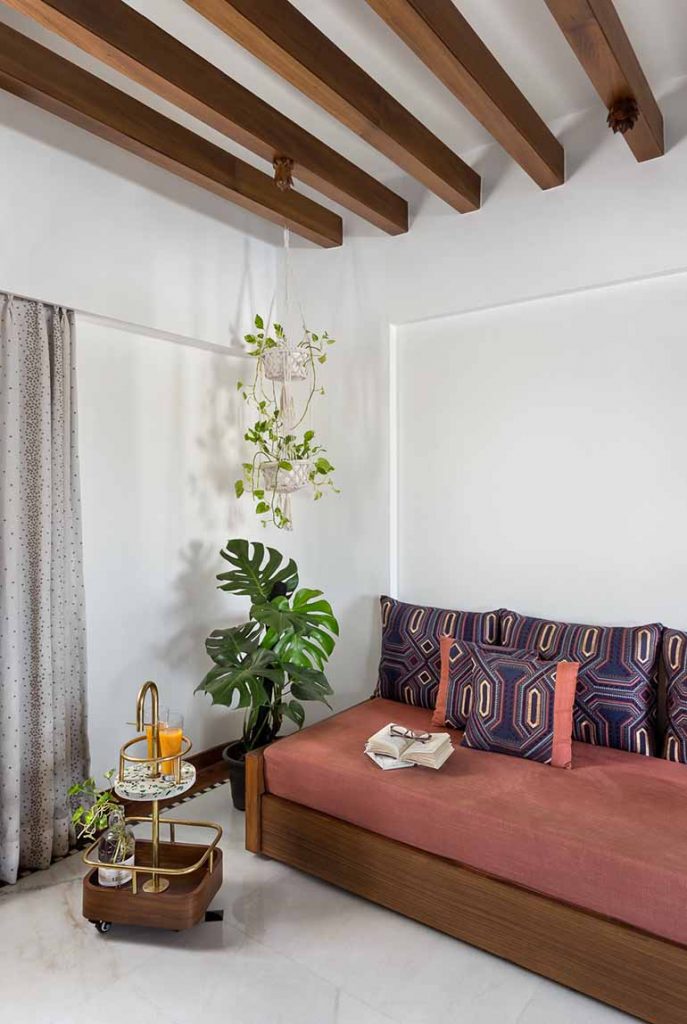
This 3 bedroom Mumbai apartment has been renovated by architect Sahiba Madan of Insitu / Kalakaari Haath for a young working couple (the designer herself and her husband). Originally bought as additional space for the couple’s parents who lived on a lower floor, the apartment has remained untouched for over 7 years. The house is infused with layers of functional furniture, rich textiles, handcrafted rafters, thoughtfully placed plants, artwork, and locally sourced treasures.
“It’s like a balance between the oldest t-shirt you’ve been sleeping in since school and the new outfit you bought and aspire to be seen in. ” says Sahiba. This sentence captures the essence of striking that balance in function and aesthetics when renovating an old Mumbai home with limited square footage.
About the project:
Who lives here: Capt. Karan Gupta and Mrs. Sahiba Madan
Location: Powai, Mumbai
Year built: 2019
Size: 1000 sq.ft apartment comprising 3 bedrooms and 2 bathrooms
Designed by: Insitu by Kalakaari Haath
Photograph courtesy for the images: Kunal Bhatia | Studio Kunal Bhatia
Budget: INR 40,00,000/-
The architect says,
We’re constantly enamoured with idea of story telling. During this project, we were formally setting up our interior and architecture arm, Insitu. As a studio, the attention to detail has been something consistent with all projects we’ve worked on, at Kalakaari Haath and Insitu. A large part of the inspiration was based on the act of creating in place. The concept was to use simplistic and familiar materials usually associated with homes and re-interpret them through unconventional details and application.
Each detail has been created with a strong association to the story of the client its relevance to the space.
She continues, “At the studio, we are constantly trying to refigure the role of the architect and the craftsman, the designer and the execution team. The effort has been to incorporate a sense of conversation, dialogue between the two within the design process. Over the years, we have worked very hard to find this balance with a team of masons, carpenters, electricians, plumbers, etc. A lot of the design details came out of these conversations and translated into the overall project aesthetic.”
Living + Dining
The idea was to open out the plan as much as possible to bring in maximum natural light and cross ventilation. They have tried to maintain homogeneity through materials that would add to the expanse. The walls are primarily white without the use of excessive cladding that adds unnecessary weight and make the space look smaller. The furniture was largely loose and designed on legs to reduce use of visual floor space.



Kitchen

Mumbai homes, like New York or any city starved of real estate space, has the best space saving ideas one can ever find. Take this nook for instance. Who would have thought a functional storage space can be built in to a corner and stay cleverly hidden.
The architect says, “We looked at creating function for every nook and corner. The passage towards the bedrooms holds a tiny yet extremely functional corner cabinet for the extra kitchen books, notes, tally diaries and supplies that need to be handy yet never find a designated spot in the house. ”

Media Room
As each room had its own function and characteristics, the wooden rafters in the media room were a celebration of life and it’s quirks. Given that the couple would end up unwinding, socialising and spending most time here, we thought of incorporating this concept through the process of a blooming lotus. The Lotus was used a metaphor to celebrating life through all its stages and people. Each phase of the lotus was hand carved in restored burma teakwood, right from a nascent bud to a full bloom lotus. Its incorporation in the ceiling reinforced the sense of aspiration attached to idea of looking up towards something.

Bedrooms
The bedrooms, like any other city home, were designed to be functional. The master bedroom has added shelves that could hold collectibles from travels and falling branches of money plants held in barni’s purchased from Kumbharwada in Dharavi.


Apart from plants and fresh flowers, we looked at greens coming in through materials as well. The bedside tables created with baroda green marble add in just the right amount of colour to an otherwise monochrome room.


We looked at the idea of the house as a space you return to after a long day of work, where you unwind and entertain your loved ones. Its’ like a balance between the oldest t-shirt you’ve been sleeping in since school and the new outfit you bought and aspire to be seen in.
Each space extends a synergy in function and experience that lends to this larger personality of the home.
Every piece of furniture was created for the house and client. We looked at them as functional objects, each of specific purpose and character floating in an otherwise neutral canvas of white floor and walls. Largely loose, most of the furniture was designed on legs to reduce unnecessary use of visual floor space. Some pieces were even designed on wheels, as service tools in the entertainment / social spaces of the house.
Even the artwork was created by our art and illustration arm, KalakaariHaath.Inc The intention was to incorporate art within the design process, as one large vision as opposed to being an after thought. Given that both our design arms function out of the same studio, some of the furniture has also been looked at as a translation of artworks developed at Kalakaari Haath.Inc
The material board was largely based on familiarity, nostalgia, warmth, comfort, attributes that extend to the idea of home the designers were creating. Teak wood, indian marble, terrazzo, brass, and cane were the primary materials used. This in turn became the primary colour palette. The overall tonality of the house is fairly muted brightened with natural light through various parts of the day. The extensive experimentation with material which adds tones to an otherwise white palette.
Resources
Lights: Al-Aziz, Mutton Street
Paints: Asian Paints
Furnishings: Landmark Furnishing
Sofas: Insitu by Kalakaarihaath
Dining table: Insitu by Kalakaarihaath
Flooring tiles: Indian Marble

Comments
Visitor Rating: 4 Stars
Visitor Rating: 3 Stars
Visitor Rating: 5 Stars